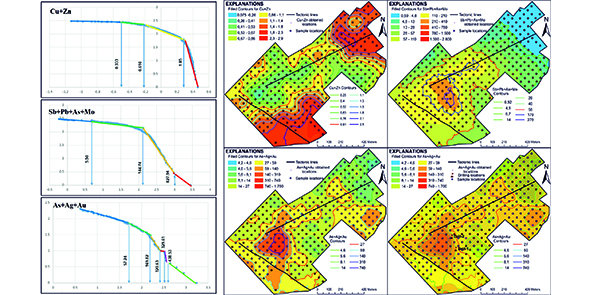Soil geochemistry survey for gold exploration at Kısacık area (Çanakkale, Ayvacık, Türkiye)
DOI:
https://doi.org/10.13133/2239-1002/18335Abstract
The Kısacık gold deposit (Çanakkale, Türkiye) is a recently discovered area identified through soil geochemistry studies. Soil geochemistry surveys in the region commonly employed high detection limits for gold (40 ppb) and silver (5 ppm). Despite this disadvantage, a significant gold mineralization was discovered at the Kısacık site. This study has two main goals: establishing reliable threshold values for analyzed elements with high detection limits, and determining if the multi-element halo technique can reveal subtle anomalies that may be missed using single-element mapping. For this purpose, a total of 305 surface-soil samples collected from the area were investigated for the concentration and spatial distribution of gold and its seven pathfinder elements (Cu, Pb, Zn, As, Mo, Sb, and Ag). Frequency-based conventional methods and fractal/ multifractal-based concentration-number (C-N) method were used to calculate the threshold values, and robust threshold values were obtained with the C-N method. To prepare the distribution of element concentrations on a contour map, the data were used to calculate the variograms (ordinary Kriging prediction) of elements in soil in the area for spatial prediction. When the single element anomaly maps of all elements were assessed, no sufficient surface enrichment/anomaly halos were seen in the area. To enhance the data, the multi-element halo technique was used to create an anomaly map. From the anomaly maps formed via the multi-element halo technique, it can clearly be seen that they are an improvement on the single-element anomaly maps. Consequently, the multi-element halo technique seems to be more efficient in the assessment of vulnerable (weak) data and insufficient geochemical anomalies for geochemical explorations.

Downloads
Published
Issue
Section
License
Copyright (c) 2024 Periodico di Mineralogia

This work is licensed under a Creative Commons Attribution 4.0 International License.

